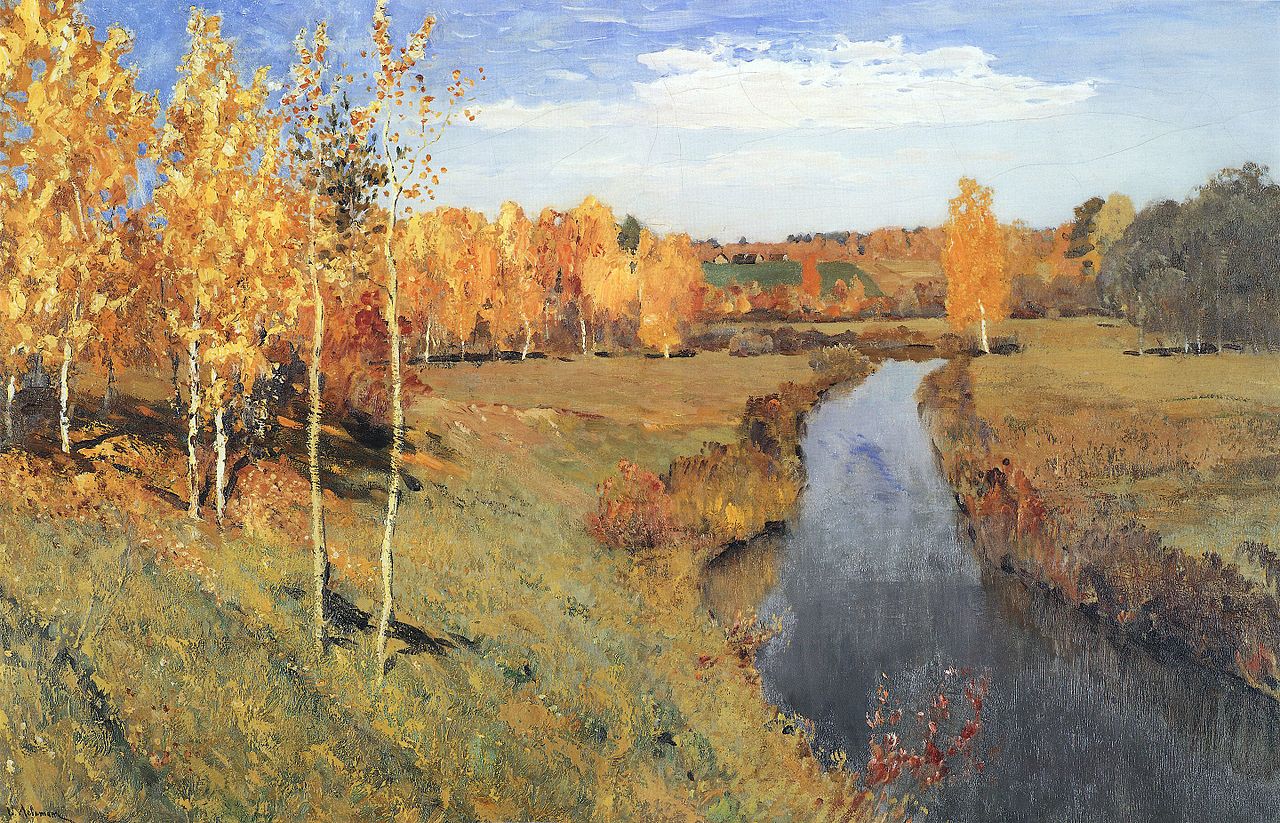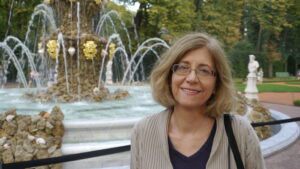Spring inspires the poet, but autumn offers the painter his most glorious banquet! Or, so it seems to me.

Oh, I do love fall. They say that one’s birth-season becomes the dearest season. Born in late September, I think that may account for my feelings.
Still, what is more gorgeous than the deepening blue of the autumn sky? The ever crisper air, and the drama of green leaves bursting into a tapestry of crimson, gold, and orange?
For us in North Central Texas, fall arrived three nights ago. We went to bed in summer, but awoke to the magic of autumn, courtesy of a noisy thunderstorm that petrified our old Border Collie.
I’m not a visual person. I took little account of nature growing up, despite living in the opulent beauty of the Shenandoah Valley. But traveling to many parts of the world has taught me a lot. One of the best lessons came when I moved to Dallas after living in Germany. Early on, a colleague taught me to orient my gaze upwards towards the unfathomably dramatic Texas skies in order to find the wealth of beauty under my feet.
But back to art and to a painting by Russian master Isaac Levitan entitled Golden Autumn (Zolotaya osen’, 1895). The name Levitan may be new to many, but it’s practically a household name for Russians. I had learned, as a student, that the beguiling autumn landscapes by Levitan were widely treasured. But I wondered why.
Well, I found out. In the northern climes, nothing guarantees a long, temperate autumn. The warmth of summer might extend into September . . . or it might not (just ask Napoleon). Unwelcome chilly, even icy, days loom as soon as September 1st arrives. So whatever remains of true, sun-lit fall is treated as an ephemeral treasure, something to be grabbed and enjoyed. Or, in the hands of a master like Levitan, painted.
With photographic accuracy highly praised at the time and still admired today, Levitan infused his canvases with the golden blush of birch trees and swaying wheat. He dotted his fall forests with swatches of red and orange, illuminated by mottled blue skies and cushioned by green-brown forest beds. He painted voluminously, choosing also winter, spring, and summer subjects. But his autumn works? They hypnotize with their beauty.
Let me end with a story. During my first weeks of doctoral research at Leningrad Conservatory in 1981, I was . . . well, let’s just say, overwhelmed trying to figure things out. It was not a particularly happy time. Everything was at stake and nothing was working well or easily.
One gorgeously sunny afternoon in mid September, my assigned advisor, a quiet, elegant professor of musicology, came to find me in the library. She was just as puzzled about what to do with me as I was about how to proceed with my research.
She gently folded my notebooks, took me by the arm and said, in essence, “Let’s go.” I assumed she had something to tell me in her office, yet she had her jacket with her. She pulled my jacket off the hook. (It was easy to identify Western clothing in those days.) She ushered me past the guard-lady (dezhurnaya) at the entrance and out into the street. We began to walk up to the Neva River. She explained nothing. I asked nothing.
We walked a long time towards the Neva river. I could feel her relaxing. Suddenly we paused. Two people, her husband and university-aged daughter, appeared next to us. We began to walk as a foursome. I got the courage to ask her daughter “Where are we going?”
“Oh!” She seemed genuinely surprised I didn’t guess. “To the Summer Gardens, of course.” She smiled, “You know, this could be our very best day of fall. Look, it’s perfect!” It was. The trees had turned vivid colors, the air was fragrant, the sky royal blue. But she realized I still didn’t understand. “We won’t have this for long. This might be the last day. We want to enjoy every minute of it.”

And we did. Along the way, they explained the history of the Romanov gardens and the layout of the Classical statuary. They taught me the Russian names of the trees, bushes, and flowers around us. They told fabulous anecdotes about the line of composers from Glinka to Prokofiev, all of whom walked in these gardens at every opportunity, particularly on such tender days of autumn.
They also reminded me that soon it would be getting dark before 5 pm, and then before 4 pm! I knew all of this in theory; but hearing their descriptions of the icy darkness of a northern winter changed my understanding. My sense of urgency to drink in this autumn beauty intensified.
Because of that walk, I was better able to enter into Levitan’s paintings. I began to grasp that artists see nature not as a stand of trees or a flowing river, but as a moment in time that explodes with mystery. A moment that must be captured to the best of the artist’s ability.
May you have such days where you live. May you fold up the books, grab the jackets, and step into the beauty of this season as you breathe in the gift of autumn.



